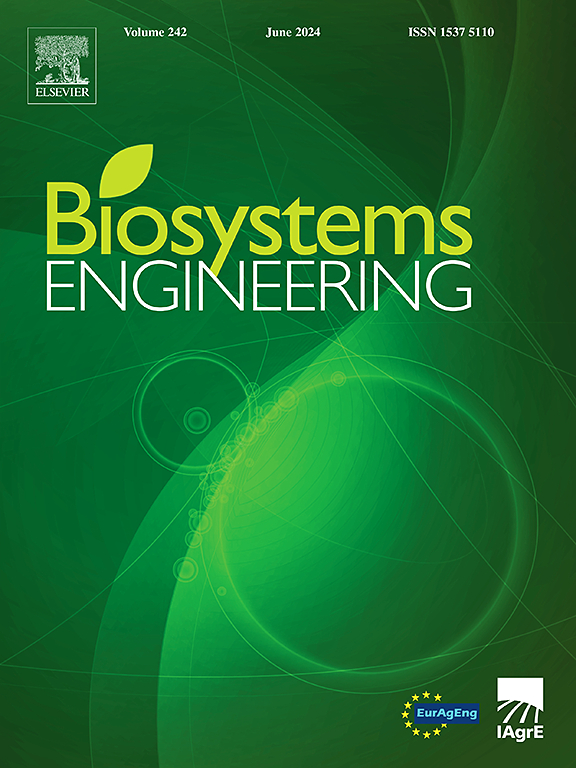Design and testing of the vibrating type cell-belt precision seed metering device for super hybrid rice
IF 5.3
1区 农林科学
Q1 AGRICULTURAL ENGINEERING
引用次数: 0
Abstract
In order to meet the requirements of low volume and high precision in the seeding process of super hybrid rice, a vibrating type cell-belt precision seed metering device was designed. To optimise the seed filling performance, a vibration plate with grid was integrated into the seed box. The structural parameters of the vibration plate were designed according to the dimensions of the cell and seed. Mechanical and kinematic theoretical analyses of the seed filling process were conducted. Single factor analysis was employed and the structural parameters of the seed metering device were determined. The inclination angle of the cell-belt was 43°, and the vibration plate was installed where the difference in elevation between the lower end of the vibration plate and the bottom of the seed box was 0 mm. A Box-Behnken test was conducted to establish quadratic regression models between the factors, which included the working speed of the cell-belt, amplitude and frequency of the vibration plate, and the test indicators, which included qualified rate, multiple rate and leakage rate, then the significance analysis was carried out. The results of the multi-objective optimisation indicated that the seed filling performance was optimised when the working speed of the cell-belt was 0.088 m·s−1, the amplitude and frequency of the vibration plate were 1.056 mm and 10.278 Hz, respectively. The qualified rate, multiple rate, and leakage rate were experimentally validated at 95.27 %, 3.92 %, and 0.81 %, which is in accordance with the requirements of super hybrid rice precision seeding.
超级杂交稻振动式细胞带精密排种装置的设计与试验
为了满足超级杂交稻播种过程中对小容量和高精度的要求,设计了一种振动式单元带式精密种子计量装置。为了优化充种性能,在种子箱中集成了带网格的振动板。振动板的结构参数是根据小区和种子的尺寸设计的。对种子充填过程进行了机械和运动学理论分析。采用单因素分析法确定了种子计量装置的结构参数。小区传送带的倾斜角为 43°,振动板安装在振动板下端与种子箱底部的高差为 0 毫米的位置。通过方框-贝肯检验,建立了细胞带工作速度、振动板振幅和频率等因素与合格率、多次率和漏种率等试验指标之间的二次回归模型,并进行了显著性分析。多目标优化结果表明,当小区传送带的工作速度为 0.088 m-s-1,振动盘的振幅和频率分别为 1.056 mm 和 10.278 Hz 时,种子充填性能达到最优。经实验验证,合格率、多次率和漏种率分别为 95.27%、3.92% 和 0.81%,符合超级杂交稻精量播种的要求。
本文章由计算机程序翻译,如有差异,请以英文原文为准。
求助全文
约1分钟内获得全文
求助全文
来源期刊

Biosystems Engineering
农林科学-农业工程
CiteScore
10.60
自引率
7.80%
发文量
239
审稿时长
53 days
期刊介绍:
Biosystems Engineering publishes research in engineering and the physical sciences that represent advances in understanding or modelling of the performance of biological systems for sustainable developments in land use and the environment, agriculture and amenity, bioproduction processes and the food chain. The subject matter of the journal reflects the wide range and interdisciplinary nature of research in engineering for biological systems.
 求助内容:
求助内容: 应助结果提醒方式:
应助结果提醒方式:


